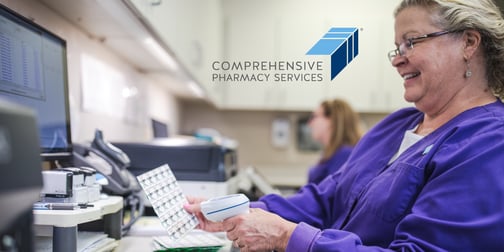 Automation is impacting industries all over the world, including the healthcare sector. The amount of data produced daily in healthcare is extensive, and nearly every stage of the patient journey is logged and processed. Every person in the medical team from administrators to clinicians are finding that their lives are made easier by automation.
Automation is impacting industries all over the world, including the healthcare sector. The amount of data produced daily in healthcare is extensive, and nearly every stage of the patient journey is logged and processed. Every person in the medical team from administrators to clinicians are finding that their lives are made easier by automation.
Automated telepharmacy is no exception. More hospitals and health systems are engaging remote telepharmacy in order to expand pharmacy services 24/7 without the need for and cost of staffing around-the-clock in-house pharmacy teams. To speed delivery of medications at the hospital site, remote pharmacists are tapping into new technologies including automated dispensing cabinets, such as Pyxis or Omnicell, that control the release of the right drug in the right quantity at the right time.
Hospitals and health systems have adopted automated dispensing cabinets to achieve a number of important outcomes, including freeing pharmacy teams to perform more clinical roles, which results in improved patient care and safety. Let’s take a look at how technologies that connect to automated dispensing cabinets are moving telepharmacy services to the next level.
How it works
The hospital staff sends the medication order to the remote pharmacist through the telepharmacy system, which sets the next steps in motion:
- Remote pharmacist obtains access to the hospitals electronic pharmacy system.
- Remote pharmacists receive the order, reviews it for accuracy and completeness, contacts the provider if an intervention needs to be made and then verifies the order.
- Remote pharmacist sends an order via electronic interface to the hospital’s automated dispensing cabinet.
- At the cabinet, a nurse enters his or her patient name and the order appears.
- The dispensing cabinet releases the correct dose of the medication at the right time for the nurse to administer.
Benefits
Use of automated dispensing cabinets by remote pharmacists increases the efficiency and accuracy of delivering medications remotely with important benefits that include:
- Faster medication availability, reducing time to first dose and number of missing doses.
- The medication dispensing system uses secure pockets to protect high-risk medications of all sizes.
- Patient’s medication record is updated electronically.
- Reallocation of on-site pharmacy staff to perform more clinical functions.
CPS Telepharmacy Suite of Services
Comprehensive Pharmacy Services is leading the way forward by incorporating new technologies to advance telepharmacy solutions for hospital and health system clients. CPS Telepharmacy solutions include:
- Remote order entry verification
- Staff augmentation so pharmacists can drive clinical outcomes
- Support for antimicrobial stewardship
- Support for opioid stewardship
- Clinical call center services
- Medication therapy management
- Medication reconciliation
- Patient education
- Specialty pharmacy follow up and consultation
- Prior authorization programs
CPS Telepharmacy monitors 3 million medication events a year and functions as a seamless extension of the client’s pharmacy staff, adapting to the specific needs of each facility. Using proprietary technology in conjunction with the hospitals electronic health record (EHR), CPS remote pharmacists flag the wrong dose or wrong drug and provide real-time data on patients, resulting in fewer adverse drug events, readmissions and emergency room visits.
When clients partner with CPS Telepharmacy, they discover that CPS remote pharmacy teams not only help them improve patient care but also positively impact the overall operation. To learn more, visit:
